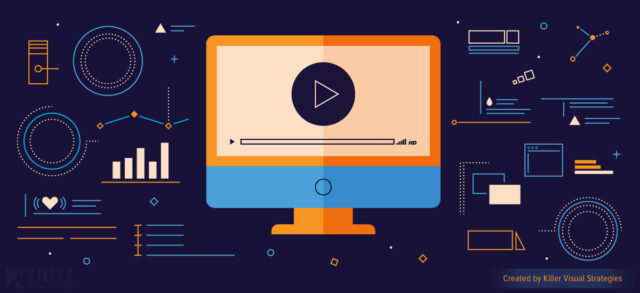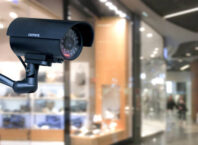Definition of motion graphics animation and its distinction from traditional animation.
Motion graphics animation is a form of animation that combines graphic design, typography, and visual effects to create movement and convey messages or stories. It is typically used in multimedia projects, such as videos, advertisements, presentations, and user interfaces, to enhance visual appeal and engage the audience.
While traditional animation involves the creation of characters or objects that are hand-drawn or digitally created and then animated frame by frame, motion graphics animation focuses more on graphic elements, text, and motion design principles. It often incorporates elements like logos, icons, illustrations, and abstract shapes, along with typographic elements, to create visually striking and dynamic compositions.
Here are a few key distinctions between motion graphics animation and traditional animation:
- Subject Matter: Traditional animation often involves storytelling through characters and narratives, while motion graphics animation focuses more on conveying information, concepts, or ideas using graphic elements and typography.
- Techniques: Traditional animation relies on techniques such as hand-drawing, frame-by-frame animation, and character rigging. Motion graphics animation, on the other hand, uses techniques like keyframing, motion paths, transitions, and effects to create movement and visual interest.
- Time and Effort: Traditional animation can be a time-consuming and labor-intensive process, requiring meticulous attention to detail in each frame. Motion graphics animation, while still requiring effort and creativity, often allows for faster production and more flexibility due to its focus on graphic elements and motion design principles.
- Purpose and Context: Traditional animation is commonly used in films, TV shows, and entertainment media, while motion graphics animation finds its place in various contexts, including marketing, advertising, user interfaces, presentations, and digital media.
Overall, motion graphics animation offers a versatile and visually appealing approach to animation, leveraging design principles, graphic elements, and motion to communicate information, enhance visual aesthetics, and engage audiences in a wide range of applications.
Exploring the elements of motion graphics: typography, iconography, illustrations, and visual effects.
Motion graphics animation incorporates various elements to create visually appealing and engaging compositions. Here, we’ll explore four key elements commonly used in motion graphics: typography, iconography, illustrations, and visual effects.
- Typography: Typography plays a vital role in motion graphics animation as it involves the use of text to convey messages, emphasize key points, and enhance visual storytelling. In motion graphics, typography can be dynamic, animated, and creatively integrated into the composition. Techniques like kinetic typography, where the text moves or transforms in sync with the audio or narrative, are commonly used. Typography can evoke emotions, establish a brand identity, and guide the viewer’s attention.
- Iconography: Iconography involves the use of visually simplified symbols or icons to represent objects, concepts, or actions. Icons are often used in motion graphics animation to convey information quickly and concisely. They can be animated to demonstrate functionality, illustrate ideas, or enhance visual storytelling. Iconography helps in simplifying complex concepts and making the content more accessible and visually appealing.
- Illustrations: Illustrations are visual representations created by hand or digitally that depict characters, objects, or scenes. In motion graphics animation, illustrations can be brought to life through movement, creating a dynamic and engaging visual experience. Illustrations can be used to tell stories, explain concepts, or add a unique visual style to the animation. They can range from simple and minimalistic to detailed and intricate, depending on the desired aesthetic and message.
- Visual Effects: Visual effects (VFX) in motion graphics animation refer to the use of digital effects and techniques to enhance the visual appeal and impact of the animation. This can include effects like particle systems, lighting, shadows, transitions, and color grading. VFX can add depth, realism, and visual interest to motion graphics, creating a more immersive experience for the viewer.
By combining these elements strategically, motion graphics animators can create visually captivating and engaging compositions. Typography, iconography, illustrations, and visual effects work together to communicate messages effectively, enhance storytelling, and captivate the audience’s attention. Each element brings its own unique contribution to the overall visual aesthetic and impact of the motion graphics animation.
How motion graphics animation combines design principles with movement to convey messages effectively.
Motion graphics animation combines design principles with movement to convey messages effectively by utilizing various techniques and strategies. Let’s explore how these elements work together:
- Composition and Layout: Motion graphics animation starts with a strong composition and layout. Design principles such as balance, hierarchy, and visual flow are applied to create a visually pleasing arrangement of elements. The composition ensures that the viewer’s attention is directed to the most important information or message being conveyed.
- Timing and Rhythm: Timing and rhythm are essential in motion graphics animation. Designers use techniques like pacing, timing, and spacing to control the speed and flow of the animation. This helps create a sense of rhythm and visual harmony, allowing the message to unfold in a smooth and engaging manner. The timing of movements, transitions, and text animations is carefully planned to align with the audio or narrative, ensuring a cohesive and synchronized experience.
- Motion and Movement: Motion is at the core of motion graphics animation. Designers use movement to give life and energy to the elements in the composition. From subtle transitions to dynamic movements, motion is employed to guide the viewer’s attention, create visual interest, and enhance storytelling. Different motion techniques like keyframing, easing, and path animation are utilized to create smooth and engaging movements.
- Visual Hierarchy and Emphasis: Effective motion graphics animation utilizes design principles of visual hierarchy and emphasis to prioritize and highlight important information. Through size, color, position, and animation, designers guide the viewer’s focus and ensure that the key message stands out. Visual cues and transitions are used strategically to emphasize specific elements or ideas.
- Color and Visual Style: Color plays a significant role in motion graphics animation. Designers carefully select color palettes that evoke desired emotions or align with brand identity. Consistent color schemes help establish visual cohesiveness and enhance the overall impact of the animation. The visual style, including the use of textures, gradients, or illustrative elements, is employed to create a unique and memorable aesthetic that aligns with the message and target audience.
- Storytelling and Narrative: Motion graphics animation is a powerful storytelling medium. Designers leverage movement and design elements to create narratives that engage the viewer on an emotional level. Whether it’s through character animations, illustrative sequences, or visual metaphors, motion graphics animation weaves a compelling story that resonates with the audience and effectively communicates the intended message.
By combining these design principles with movement, motion graphics animation creates a dynamic and impactful visual experience. The thoughtful integration of composition, timing, motion, hierarchy, color, and storytelling elements ensures that the message is conveyed effectively, engaging the viewer and leaving a lasting impression.
The evolution of motion graphics animation from its origins to its current state.
The evolution of motion graphics animation has been a fascinating journey, witnessing significant advancements in technology, artistic styles, and the ways in which it is used in various industries. Let’s explore the key milestones and transformations in the history of motion graphics animation:
- Early Beginnings: Motion graphics animation traces its roots back to the early 20th century when experimental filmmakers and artists began exploring ways to combine graphic design and moving images. Artists like Oskar Fischinger and Norman McLaren experimented with abstract shapes and hand-drawn animations, paving the way for the use of motion and design in animation.
- Film Title Sequences: In the 1950s and 1960s, motion graphics animation found its place in film title sequences. Designers like Saul Bass revolutionized the art of title design by incorporating dynamic motion, typography, and visual storytelling. These sequences became iconic and demonstrated the potential of motion graphics animation as a powerful storytelling tool.
- Digital Revolution: With the advent of computers and digital technologies, motion graphics animation underwent a significant transformation. The introduction of software like Adobe After Effects and advancements in computer graphics allowed for more precise control over movement, effects, and typography. This digital revolution democratized motion graphics animation, making it more accessible to a wider range of artists and designers.
- Advertising and Marketing: As technology advanced, motion graphics animation gained popularity in the advertising and marketing industry. It offered a visually captivating way to convey brand messages, product features, and promotions. Animated commercials, explainer videos, and social media ads became key components of marketing campaigns, leveraging motion graphics animation to engage audiences and increase brand visibility.
- User Interfaces and Experiences: Motion graphics animation found its way into user interface (UI) and user experience (UX) design, enhancing interactivity and usability. Animated transitions, micro-interactions, and visually engaging feedback became integral parts of web and app design. Motion graphics animation brought interfaces to life, making them more intuitive and engaging for users.
- Integration in Film and Television: Motion graphics animation has become an integral part of film, television, and documentary production. It is used in titles, credits, and visual effects to enhance storytelling and create immersive experiences. The fusion of live-action footage with motion graphics animation allows for seamless integration and the creation of visually stunning visuals.
- Social Media and Digital Content: The rise of social media platforms and the demand for short-form, visually captivating content have fueled the growth of motion graphics animation. Brands, influencers, and content creators utilize motion graphics animation to capture attention, deliver messages concisely, and stand out in crowded digital spaces.
- Augmented Reality and Virtual Reality: Motion graphics animation has also found its place in emerging technologies like augmented reality (AR) and virtual reality (VR). It enhances immersive experiences by animating 3D objects, creating interactive narratives, and guiding users through virtual environments. Motion graphics animation adds a layer of engagement and interactivity in AR and VR applications.
Today, motion graphics animation continues to evolve and push boundaries. Advancements in technology, software, and rendering capabilities enable artists and designers to create more complex and realistic animations. As motion graphics animation becomes increasingly integrated into our digital lives, we can expect to see even more innovative and immersive experiences in the future.

















































































